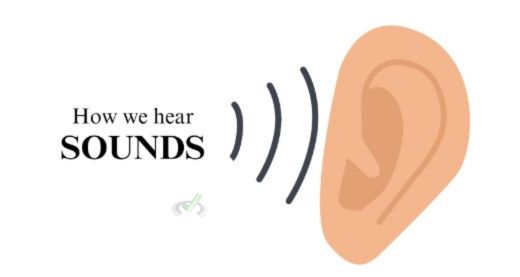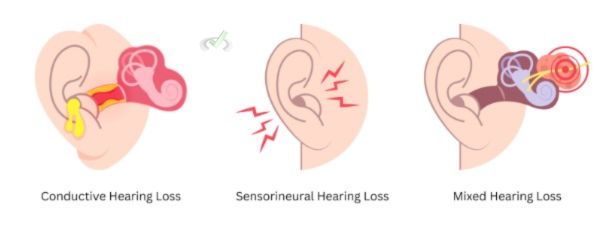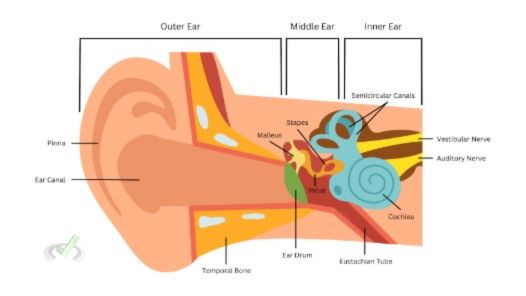Auditory signal transduction is the process by which our ears and brain work together to turn sound waves into signals we can understand. This guide will cover how we hear, the parts involved, and how this process links to other topics in psychology and science.
I. The Process of Hearing: How We Hear Sounds
Hearing involves several steps, from capturing sound waves to understanding them in our brains. Let's break these down:

A. Sound Wave Capture
Sound waves are vibrations that travel through the air. When these vibrations reach our ears, they start the hearing process.
B. The Outer Ear: Collecting Sounds
The outer ear, including the ear canal, catches sound waves. It acts like a funnel, guiding these waves to the middle ear.
C. The Middle Ear: Amplifying Sounds
The middle ear has three tiny bones called the ossicles (malleus, incus, and stapes). These bones amplify the sound waves. This means they strengthen the waves to move into the inner ear.
D. The Inner Ear: Converting Waves to Signals
Inside the inner ear is the cochlea, a spiral-shaped organ filled with fluid. When sound waves enter the cochlea, they cause tiny hair cells to move. This movement creates electrical signals. These signals are then sent to the brain.
E. The Auditory Nerve: Sending Signals to the Brain
The auditory nerve carries these electrical signals from the cochlea to the brain. The brain interprets these signals as sounds, helping us recognize them as music, voices, or noises.
II. Key Components: Parts Involved in Hearing
Each part of the ear and brain has a specific role in hearing.
A. The Ear Structure
- Outer Ear: Captures and directs sound waves.
- Middle Ear: Contains the ossicles that amplify sound waves.
- Inner Ear: Houses the cochlea, where sound waves are converted into electrical signals.
B. Hair Cells: The Signal Converters
Hair cells in the cochlea are crucial for hearing. They move in response to sound vibrations and create electrical signals. These cells are sensitive and can be damaged by loud noises or aging.
C. Auditory Pathways: The Brain's Role
The auditory nerve sends signals to the auditory cortex in the brain. This area processes the signals so we can understand what we're hearing.
III. Issues in Auditory Signal Transduction: Hearing Problems
Problems can occur in different parts of the hearing process, leading to various types of hearing loss.

A. Conductive Hearing Loss
This happens when sound waves can't properly reach the inner ear. Causes can include blockages in the ear canal or issues with the ossicles.
B. Sensorineural Hearing Loss
This occurs when there's damage to the cochlea or auditory nerve. It results from aging, exposure to loud noises, or infections.
C. Mixed Hearing Loss
This type involves conductive and sensorineural issues, affecting multiple parts of the hearing process.
IV. Understanding and Testing Hearing: Tools and Techniques
Several methods help test hearing and diagnose problems.
A. Audiometry
Audiometry tests measure how well a person hears different sounds. They assess the ability to detect various frequencies and volumes. This helps determine the type and degree of hearing loss.
B. Imaging and Diagnostic Tools
Doctors use tools like CT scans and MRIs to view the structures of the ear and brain. These images help pinpoint the causes of hearing problems.
V. Bridge: Auditory Transduction and Related Fields
Auditory signal transduction connects with other areas in psychology and science.
A. Neurotransmitters and Auditory Processing
Neurotransmitters like glutamate play a key role in transmitting signals in the auditory pathways. They help in the communication between neurons, which is essential for hearing.
B. Neuroplasticity
Neuroplasticity is the brain's ability to adapt and change. In the context of hearing, this can involve learning to interpret sounds differently after hearing loss or cochlear implant surgery.
C. Psychological Impact of Hearing Loss
Hearing loss can affect mental health, leading to issues like social isolation, anxiety, and depression. Understanding these effects is crucial for providing support and treatment.
D. Biological and Behavioral Neuroscience
The auditory system is part of a broader network that includes other sensory and cognitive systems. This network helps us hear, react, and adapt to our environment.
VI. Wrap Up/Key Terms
Auditory signal transduction is the process of turning sound waves into signals that our brain can understand. It involves the outer, middle, and inner ear and the auditory nerve. Understanding this process helps diagnose hearing issues and shows how it links to other areas like brain function and mental health.
Key Terms
- Outer Ear: Captures and directs sound waves.
- Middle Ear: Amplifies sound waves using the ossicles.
- Inner Ear: Transform sound waves into electrical signals via the cochlea.
- Hair Cells: Convert vibrations into electrical signals.
- Auditory Nerve: Carries signals to the brain.
- Conductive Hearing Loss: Issues with sound wave transmission.
- Sensorineural Hearing Loss: Injury to the cochlea or auditory nerve.
- Neuroplasticity: The brain's capability to adapt and change.
- Neurotransmitters: Chemicals that help send signals in the brain.
VII. Practice
Test your understanding with these application-based questions:
Sample Practice Question 1
A person has trouble hearing high-pitched sounds but can hear low-pitched sounds fine. What part of the ear is likely damaged?
A. Outer ear
B. Middle ear
C. Cochlea
D. Auditory nerve
Ans. C
The cochlea is responsible for detecting different frequencies of sound. Damage to the cochlea’s hair cells can affect the ability to hear certain pitches.
Sample Practice Question 2
If a person experiences hearing loss due to exposure to loud noises, what type of hearing loss is this most likely?
A. Conductive
B. Sensorineural
C. Mixed
D. Temporary
Ans. B
Loud noises can damage the hair cells in the cochlea. This leads to sensorineural hearing loss that affects the inner ear or auditory nerve.








 To help you achieve your goal MCAT score, we take turns hosting these
To help you achieve your goal MCAT score, we take turns hosting these 





















 reviews on TrustPilot
reviews on TrustPilot